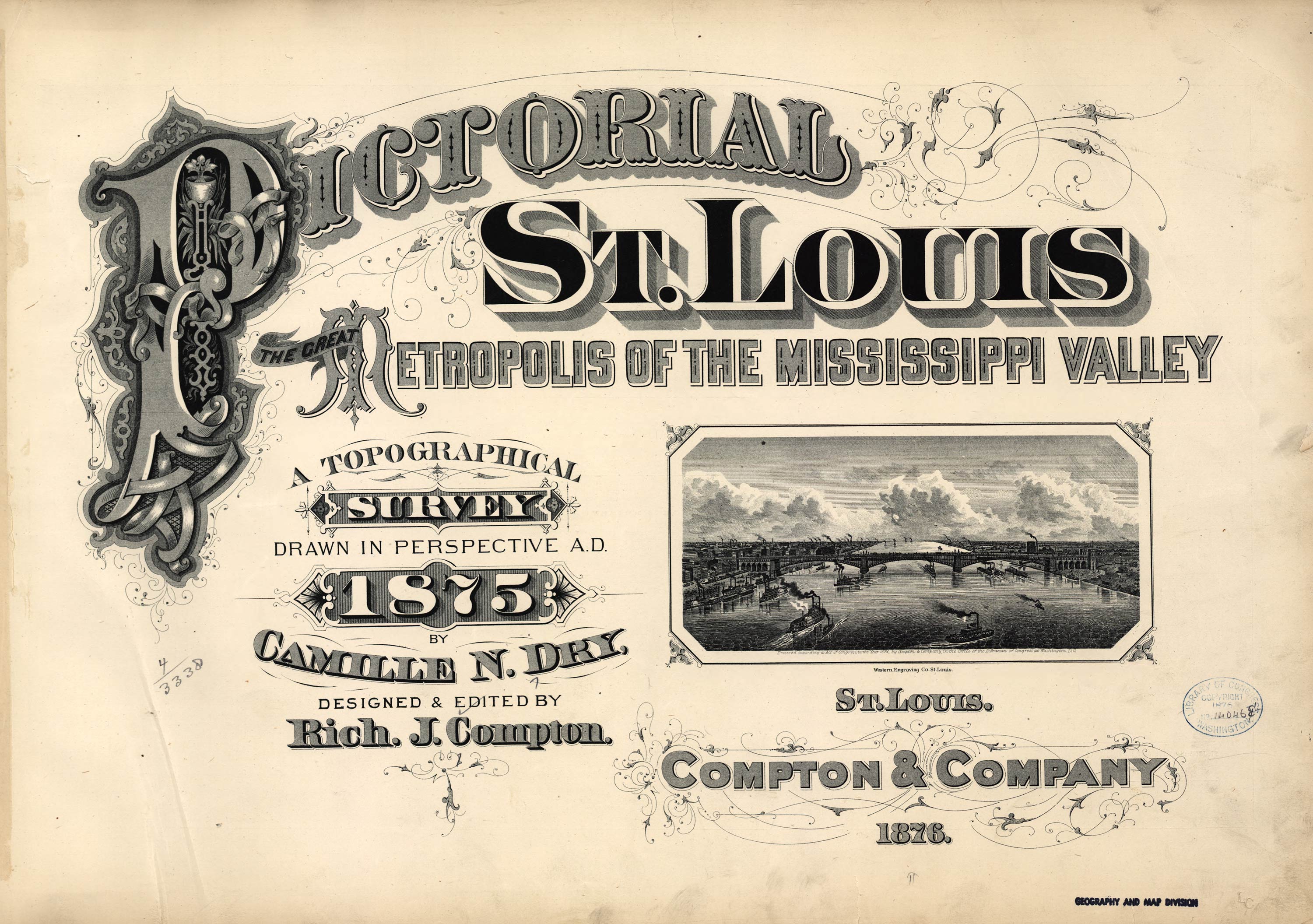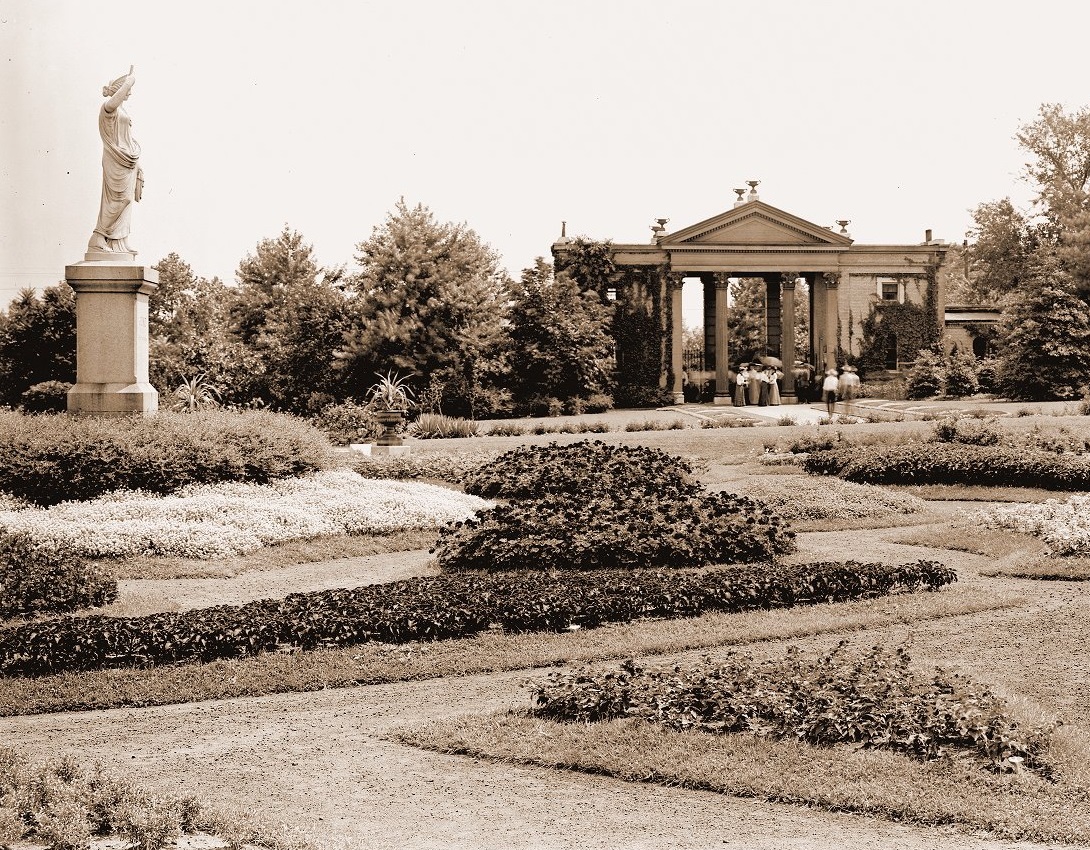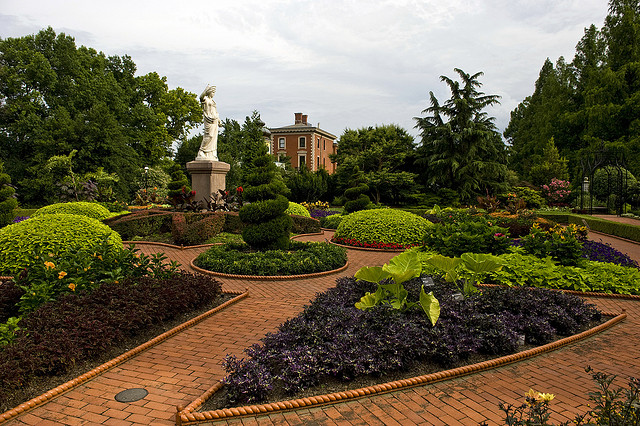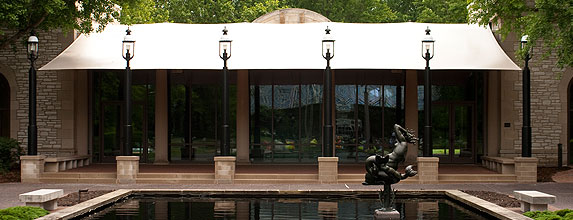



| The Juno statue and entrance in the 1890s Missouri Botanical Garden archives |
The Juno statue today moved to the Victorian District image from the Missouri Botanical Garden |

| The old entrance today renovated as the Spink Pavilion, image from the Missouri Botanical Garden |

[Shaw's Garden] Or, more properly speaking, The Missouri Botanical Gardens, near Tower Grove Park, may with truthfulness be called the finest floral garden in the United States. The enclosure contains about fifty acres, divided into the herbaceous and flower garden (ten acres), Fruiticetum, or experimental fruit garden (six acres) j the Arboretum (twenty-five acres); and a larder and vegetable garden, with adjoining grounds, The botanical gardens have been under cultivation since 1857, Mr. Shaw having had exclusive superintendence of them during this time. Some years ago he signified his intention of giving these gardens to the city at his death, and at a later period he made the proposition in a definite and tangible form, That the public might receive the full benefit of this delightful resort, Mr. Shaw agreed to keep it open at all proper times, free of admission to all, provided it be kept free from taxation. The expense for labor and necessary improvements is defrayed by the owner. The flower garden contains almost every plant and flower that can be thought of, from all quarters of the globe. The large conservatories, on the north side, contain the tropical plants, and all the flowers of rare quality. In one of these hot houses may be seen hundreds of specimens of the Mexican prickly pear or cactus ; in another, an almost endless variety of geraniums, ferns, heliotropes, fuchias, dahlias, and the many familiar flowers of this country, beside palm trees, fig trees, india rubber trees, bamboo, aloe, screw-pine, etc.
The abroretum is an interesting place to spend an hour to those interested in the study of dendrology. Every tree known to the American climate may be found there, with proper labels, and planted in such graceful promiscuity as to suggest that they are all indigenous. Mr. Shaw's summer residence is in the southern end of the enclosure, and near by is the museum, a neat, fire-proof building, containing many rare and beautiful things gathered from the vegetable, animal, and mineral worlds. There is also a botanical library, which may be opened to those who wish to examine it, on application to Mr, Shaw.

Pictorial St. Louis